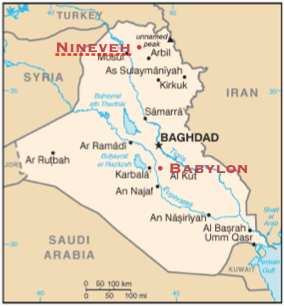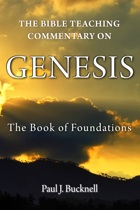Genesis 10-11 Unity & Diversity – The Bible Teaching Commentary
Paul Bucknell
|
Noah
|
“And the sons of Ham were Cush and Mizraim and Put and Canaan. And the sons of Cush were Seba and Havilah and Sabtah and Raamah and Sabteca; and the sons of Raamah were Sheba and Dedan. Now Cush became the father of Nimrod; he became a mighty one on the earth. He was a mighty hunter before the LORD; therefore it is said, “Like Nimrod a mighty hunter before the LORD.” And the beginning of his kingdom was Babel and Erech and Accad and Calneh, in the land of Shinar. From that land he went forth into Assyria, and built Nineveh and Rehoboth-Ir and Calah” (Genesis 10:6-11).
At first, this might look like a very boring list of names. As we take a thorough look, however, we find a summary of ancient history. Ham was the son of Noah. Cush was one of Ham’s sons. Cush had his own son and named him Nimrod (great grandson of Noah).
 This history that is quickly summarized here has many historical textbooks on ancient history. Much has been found through archaeological studies. Most significant is what the Bible here records. Nimrod built a number of large cities, many of which we know from ancient history.
This history that is quickly summarized here has many historical textbooks on ancient history. Much has been found through archaeological studies. Most significant is what the Bible here records. Nimrod built a number of large cities, many of which we know from ancient history.
Nimrod started his city-building campaign in what we now know as southern Iraq in the plains of Shinar known as Mesopotamia, the land between the two rivers.
Babel (Genesis 10:10) is Babylon (near modern day Bagdad). Accad (Akkad) is known for the ancient language Akkadian. Erech is suggested to be Uruk of Gilagamesh’s epic. Many scholars assert Gilgamesh is indeed Nimrod himself (www.ancientdays.net/nimrod.htm). Cush’s city was named after him Kish.
Genesis 10:11 says that Nimrod afterwards when to the north and started a number of cities there. “From that land he went forth into Assyria, and built Nineveh….” Nineveh is the most well known city along the Tigris both in and outside the Bible. The historical mounds of this huge city that had a wall eight miles long with fifteen huge gates. Many historical artifacts exist from this time. One of the mounds where Nineveh is (outside Mosul) actually means ‘The prophet Jonah’ obviously related to the Prophet Jonah that visited that city. Calah is another city in modern day Iraq, twenty miles southeast of Mosul also mentioned in Genesis 10:11. This has again come alive because of the Iraq war, the place of the first great cities and civilizations.
Genesis 10 provides a clear background of the Tower of Babel. Genesis 10 and 11 cannot be separated. Neither should modern history be disconnected to ancient history as described in the scriptures.
Genesis unashamedly confronts secularism. Secularism asserts that man has no roots back to God. They live for the moment. Genesis states the the world around us and man’s origins are founded by and for God. This makes us dependent upon Him. Man is made for God and only can find personal fulfillment by having God’s purpose accomplished in his or her life.
This is just a sample of the great amount of materials found in the book: Genesis: The Book of Foundations. Only some of our Genesis materials have been put on the web.
Or better yet, for a little bit more get the Old Testament Library which has this book along with powerpoints, videos and hundreds of other articles, all presented with understanding and applying God's Word to our lives. Great deal!
BFF Homepage | Top | Back | Bible Topics | Genesis | Next | Assignment
Biblical Foundations for Freedom

